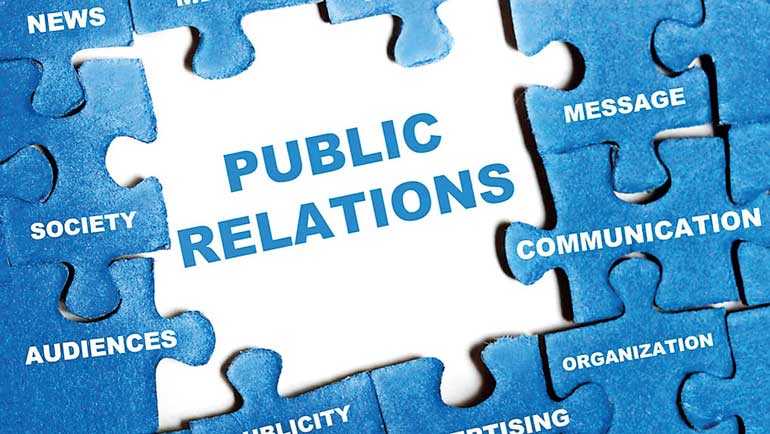Friday Nov 07, 2025
Friday Nov 07, 2025
Monday, 4 November 2019 00:00 - - {{hitsCtrl.values.hits}}

Public relations has been defined as the interaction of a business with its customer base, and or with prospective customers. This interaction can take various forms, which may include events such as trade shows, marketing promotions, customer relations initiatives and other such efforts in which the business and the public interacts. Many larger companies have an investor relations department for specialised interactions. (Are your shoulders wide enough to carry a company’s reputation?
Public relations: The new marketing?
Public relations is also a catch-all term that means the dissemination of newsworthy information to the media – niche magazines and trade journals, newspapers, radio, television and the internet – to get publicity. To maximise the sales potential of any business, large or small, a public relations program should be part of the master marketing plan. (Marketing is a vital component of a large sustainable business).
No matter what a company sells – goods, services or both – a smart public and media relations program can have big returns and it may not necessarily require a big budget. Generally – but not always – public relations may be less expensive than advertising, and is best used as a complement to the marketing efforts of a business.
Advertising expenses typically include a creative fee for copywriting, art and or photography, model fees, along with additional costs which accumulate even before the costs of buying media – print, broadcast (television, radio, etc.), internet, billboard or other. By contrast, a public relations program (while perhaps less costly) can create a major impact among both established and potential customers for the goods and or services of a company. The result of effective public relations can be increased sales, a competitive edge over business rivals and eventually, improved profitability.
But there’s another aspect of public relations that can be just as important. When things go bad for a company such as the necessity for a product recall, a major product liability law suit, a bankruptcy or some other potentially damaging situation, an effective public relations initiative can minimise or even eliminate the negative fallout. In these cases, public relations is often called ‘crisis management’.
Reflecting the importance of public relations as a marketing tool on a par with traditional advertising is the recent trend of major advertising agencies buying global public relations firms or establishing full-service public relations divisions within their agencies.
What effective public relations can accomplish:
The following are some of the positive outcomes of a successful public relations department:
Attract attention to a company and raise its visibility in a competitive market niche
Generate interest in and enthusiasm for a company’s goods and or services
Public relations and publicity
Newsworthy public relations events or occurrences may get publicity for a business. But the media must be informed of the event or occurrence. This is usually done by sending a news release or press release (the terms are interchangeable) to the media in which the information is intended to appear.
Newsworthy events may include:
Whatever the business, there may be some way for it to attract media attention to the company through an innovative public relations effort.
What won’t get publicity
Sales events are not public relations initiatives, and are not likely to get media exposure.
No matter how the sales events are promoted – clearance sales, fire sales, bankruptcy sales, lost-our-lease sales, etc., are best publicised through advertising because editors will not, in most cases, regard these as news stories.
Writing the press release and contacting the media
The news release describing the planned public relations event may be written in-house by a regular employee of a business, or a public relations consultant or agency may be hired to provide that service.
If the news release is to be written by an outside public relations consultant or agency, competitive price bids may be solicited from several sources. There are several advantages to hiring an outside consultant or agency to handle the news release.
A story unrelated to business, such as sponsorship of charity event or a contest, should be sent to the city editor or feature editor. There are editors with similar functions at all media including internet sites.
Crisis management
Sometimes things go wrong for a firm. Serious problems such as a product recall, a product liability law suit, strikes, government shutdowns or bankruptcies may damage the image of the company affected.
Public relations experts who handle problems such as these – they’re also called crisis managers – advise as follows:
Conclusion
Companies that understand the principles of public relations, and employ them regularly, may enjoy a competitive advantage over rivals which are not public relations savvy. Among the beneficial results of strategic public relations are increased sales, increased customer traffic, a continual ‘buzz’ or talk about a company which is frequently mentioned positively in the media, and a brightly shining image in the eyes of their customers and potential customers.
There are many additional aspects, complexities and subtleties of public relations. This article is meant only as an introduction to the art and craft of public relations and much useful additional material is widely available.